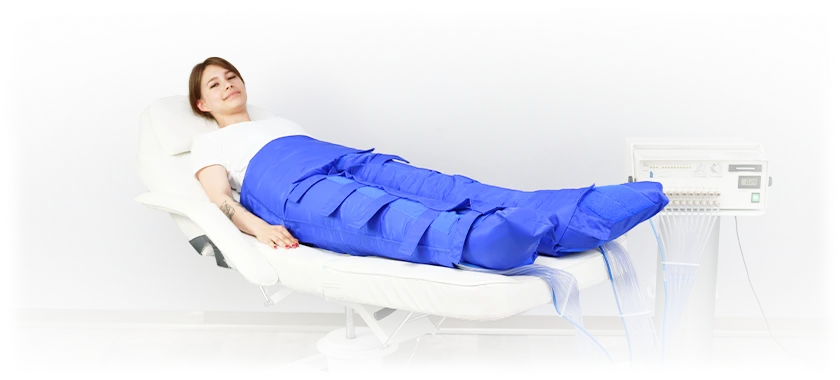
Air compression lymphatic drainage, also known as pressotherapy, is a non-invasive treatment that uses controlled air pressure to stimulate lymphatic drainage. This therapy involves wearing garments like sleeves or boots that are inflated with air in a specific sequence, mimicking the natural flow of lymph fluid. The rhythmic compression helps to move excess fluid and waste products away from congested areas, reducing swelling and improving circulation.
How it works:
The air compression device inflates and deflates different chambers within the garment in a specific order, typically starting from the extremities (hands or feet) and moving towards the torso.
This sequential compression mimics the natural pumping action of muscles and lymphatic vessels, encouraging the movement of lymphatic fluid.
By gently squeezing and releasing the limbs, the therapy helps to move excess fluid and proteins out of the tissues and back into the bloodstream, where they can be eliminated by the body.
Benefits of Air Compression Lymphatic Drainage:
It’s particularly effective in managing lymphedema, a condition where lymphatic fluid accumulates in tissues, causing swelling, usually in the arms or legs.
The rhythmic compression enhances blood circulation, promoting better oxygen and nutrient delivery to tissues.
By improving lymphatic flow, it helps the body eliminate waste products and toxins more efficiently.
It can alleviate pain and discomfort associated with swelling, muscle fatigue, and certain medical conditions.
The gentle massage-like action can have a calming and relaxing effect.
It can help reduce muscle soreness and accelerate recovery after exercise or injury.
By improving circulation and reducing fluid retention, it can contribute to smoother, firmer skin and potentially reduce the appearance of cellulite.
Applications:
Important Considerations:
It’s essential to consult with a healthcare professional or a certified therapist before starting air compression lymphatic drainage, especially if you have any underlying medical conditions.
Certain conditions, such as deep vein thrombosis, active infections, or severe heart conditions, may be contraindications for this therapy.